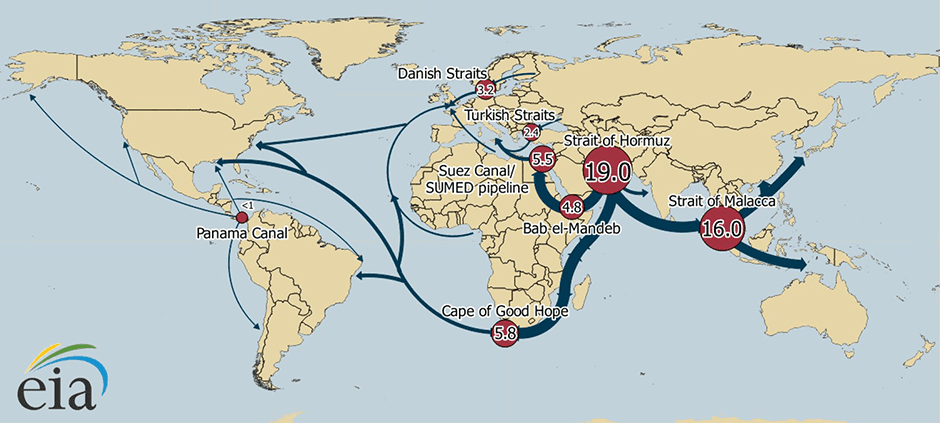The U.S. Energy Information Administration (EIA) defines world oil chokepoints as narrow channels along widely used global sea routes, some so narrow that restrictions are placed on the size of the vessel that can navigate through them. Chokepoints are a critical part of global energy security because of the high volume of petroleum and other liquids transported through their narrow straits.
In 2015, total world petroleum and other liquids supply was about 96.7 million barrels per day (b/d).1 EIA estimates that about 61% of that amount (58.9 million b/d) traveled via seaborne trade.2 Oil tankers accounted for almost 28% of the world’s shipping by deadweight tonnage in 2016, according to data from the United Nations Conference on Trade and Development (UNCTAD), having fallen steadily from 50% in 1980.3
International energy markets depend on reliable transport routes. Blocking a chokepoint, even temporarily, can lead to substantial increases in total energy costs and world energy prices. Chokepoints also leave oil tankers vulnerable to theft from pirates, terrorist attacks, political unrest in the form of wars or hostilities, and shipping accidents that can lead to disastrous oil spills.
Read the full article on EIA.





